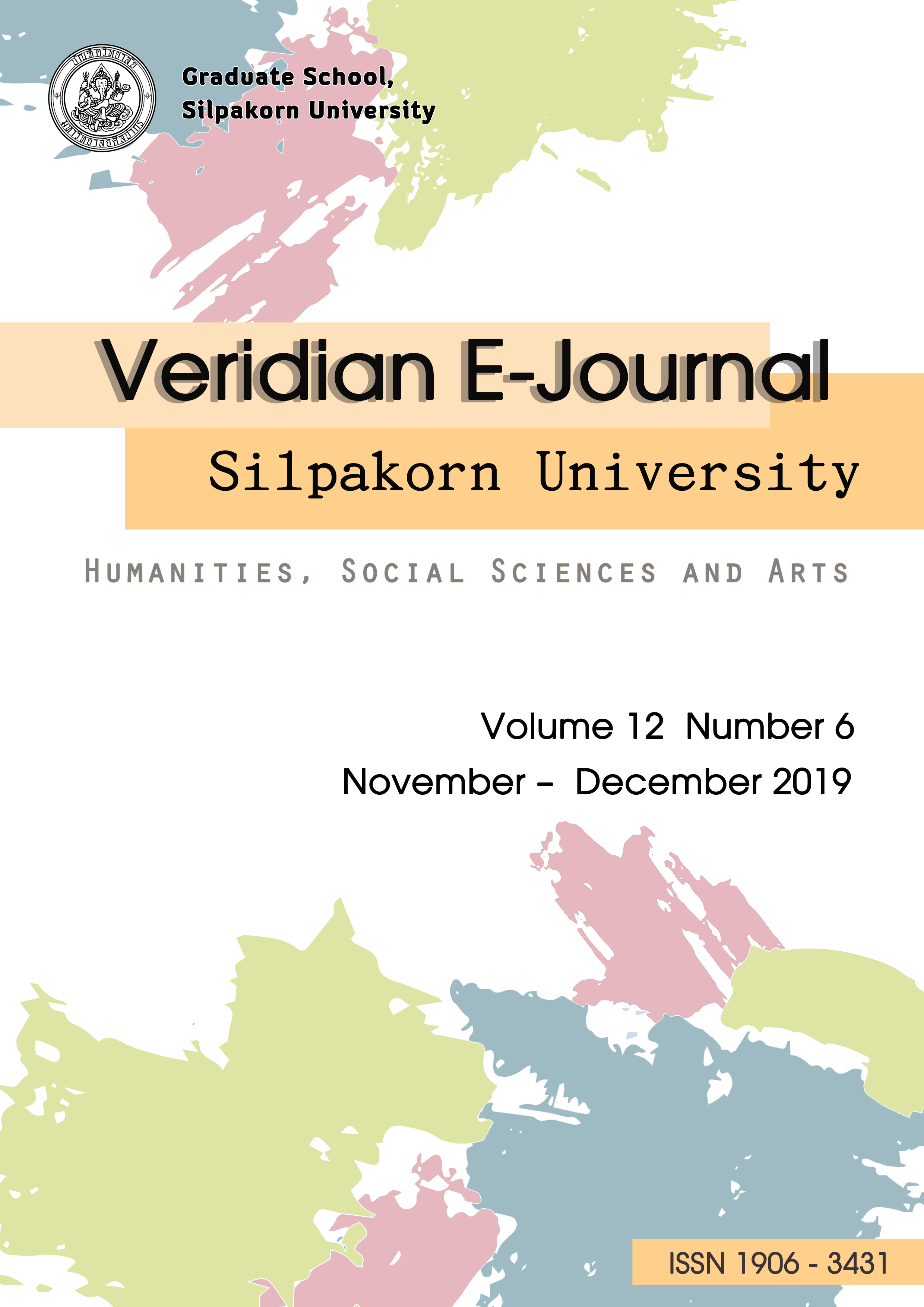รูปแบบการพัฒนาศักยภาพในการพึ่งพาตนเองทางด้านเศรษฐกิจของแม่หญิงลาว ในสาธารณรัฐประชาธิปไตยประชาชนลาว (สปป.ลาว) (The Model Of Development Of Potential Of Self- Economic Reliance Of Lao Women InLao People’s Democratic Republic)
Main Article Content
Abstract
การวิจัยครั้งนี้มีวัตถุประสงค์ 1) ศึกษาสภาพและปัญหาการพึ่งพาตนเองทางด้านเศรษฐกิจของ แม่หญิง ลาวใน สปป.ลาว 2) สร้างรูปแบบการพัฒนาศักยภาพในการพึ่งพาตนเองทางด้านเศรษฐกิจของ แม่หญิงใน สปป.ลาว และ 3) ทดลองใช้รูปแบบและประเมินผลการใช้รูปแบบการพัฒนาศักยภาพใน การพึ่งพาตนเองทางด้านเศรษฐกิจของแม่หญิงใน สปป.ลาว การวิจัยครั้งนี้เป็นการวิจัยและพัฒนาโดยผสมผสานวิธีทั้งการวิจัยเชิงคุณภาพและเชิงปริมาณ การวิจัยเชิงคุณภาพ ใช้วิธีการสัมภาษณ์เจาะลึก การสนทนากลุ่มและการประชุมระดม ความคิดเห็น กลุ่มเป้าหมาย ประกอบด้วย นักวางแผนการ ผู้บริหารข้าราชการ นักวิชาการที่เกี่ยวข้องในหน่วยงานของสหพันธ์แม่หญิงลาว กระทรวงการเงิน กระทรวงแผนการและการลงทุน กระทรวงเศรษฐกิจและการค้า กระทรวงภายใน ผู้บริหารจากศูนย์กลางสหพันธ์แม่หญิงลาว ตัวแทนของแม่หญิงจากชุมชน ผู้นำชุมชน รวมทั้ง แม่หญิงที่เป็นตัวแทนขององค์กรพัฒนาแม่หญิงลาว ผู้มีอำนาจการปกครองท้องถิ่นเจ้าเมือง ร่วมทั้งภาคีที่เกี่ยวข้อง รวมทั้งหมด 100 คน เครื่องมือที่ใช้เชิงคุณภาพคือแบบสัมภาษณ์เจาะลึก และการสนทนากลุ่มในประเด็นประชุมระดมความคิดเห็น ส่วนเชิงปริมาณใช้แบบสอบถามแม่หญิงใน สปป.ลาว ทั้งหมด 399 คน โดยการเลือกกลุ่มตัวอย่างใช้วิธีสุ่มแบบแบ่งชั้น การวิเคราะห์ข้อมูลเชิงคุณภาพโดยการวิเคราะห์เนื้อหา ส่วนข้อมูลเชิงปริมาณใช้สถิติ ร้อยละ และความถี่
ผลการวิจัยพบว่า
1) สภาพและปัญหาการพึ่งพาตนเองทางด้านเศรษฐกิจของแม่หญิงลาวใน สปป.ลาว พบว่า ด้านรายได้และรายจ่ายในครัวเรือน พบว่าแม่หญิงลาวมีรายได้สุทธิ/เดือนอยู่ระหว่าง 1,000,0001-3,000,000 กีบ ร้อยละ 44.40 และ ด้านรายจ่ายมีค่าใช้จ่ายพื้นฐานในการดำรงชีวิตเป็นค่าอาหาร 16,306,600.79 กีบ ต่อปี ร้อยละ 35.41 ด้านภาระหนี้สินในครัวเรือน มีภาระหนี้สิน ร้อยละ 62.65 ด้านการทำบัญชีครัวเรือนไม่เคยทำการทำบัญชี ร้อยละ 85.98 ด้านการเข้าถึงแหล่งทุน ได้รับการช่วยเหลือทางเศรษฐกิจจากแหล่งสนับสนุน ร้อยละ 55 และด้านที่อยู่อาศัยเป็นเจ้าของที่ยู่อาศัยในพื้นที่ดินตนเอง ร้อยละ 78.44
2) ผลการสร้างรูปแบบการพัฒนาศักยภาพในการพึ่งพาตนเองทางด้านเศรษฐกิจของแม่หญิงใน สปป. ลาว ได้ 5 รูปแบบ (1) รูปแบบรายได้และรายจ่าย (2) รูปแบบภาระหนี้สิน (3) รูปแบบการทำบัญชีครัวเรือน (4) รูปแบบการเข้าถึงแหล่งทุน และ (5) รูปแบบที่อยู่อาศัย
3) ผลการทดลองรูปแบบและประเมินผลการใช้รูปแบบการพัฒนาศักยภาพในการพึ่งพาตนเองทางด้านเศรษฐกิจของแม่หญิงใน สปป.ลาว คือ (1) รูปแบบรายได้และรายจ่าย ได้ดำเนิน 2 กิจกรรม คือการอบรมวิธีทำบัญชีรายรับรายจ่ายในครัวเรือน และ การลดรายจ่ายในครัวเรือนโดยการทำพืชผักสวนครัว (2) รูปแบบภาระหนี้สิน ได้ดำเนิน 3 กิจกรรม คือ อาชีพเสริมการแปรรูปอาหาร อาชีพตัดเย็บเสื้อผ้า และ อาชีพเย็บกระเป๋าผ้า (3) รูปแบบการทำบัญชีครัวเรือน ได้ดำเนินกิจกรรม คือ การจัดทำบัญชีรายรับรายจ่ายในครัวเรือน (4) รูปแบบการเข้าถึงแหล่งทุนได้ดำเนิน 2 กิจกรรมคือการอบรมความรู้การเข้าถึงแหล่งทุน และการจัดตั้งกองทุนหมู่บ้านในชุมชน และ (5) รูปแบบที่อยู่อาศัย ได้ดำเนิน 2 กิจกรรม คือการรักษาสิ่งแวดล้อมรอบบริเวณบ้านและการส่งเสริมความปลอดภัยรูปแบบไฟฟ้าภายในบ้าน
การประเมินผลการใช้รูปแบบพบว่าแม่หญิงมีรายได้เพิ่มขึ้นนำไปสู่การพึ่งพาตนเองได้ มีทักษะในการจัดการดูแลบ้านให้ปลอดภัยจากอัคคีภัย มีการปลูกผักสวนครัวไว้บริโภคและจำหน่าย
The purposes of this research were : 1) to study the current state and problems of potential of self-economic reliance of Lao women in Lao PDR 2) to construct the model of development of potential of self-reliance of Lao PDR and 3) to implement and evaluate the model of development of potential of self-reliance of Lao PDR This is a mix method of qualitative and quantitative research. The qualitative research was conducted by an in-depth interview, a focus group discussion and brainstorming sessions. The target groups were 100 informants including planners, administrators, civil servants, academicians from relevant offices under Lao Women’s Union, ministry of finance, ministry of planning and investment, ministry of industry and commerce, administrators from ministry under administration of Lao Women’s Union, representatives’ women in community, community leaders, representatives from Lao Women’s Union, local governors and relevant parties. Tools for qualitative research included an in-depth interview, a focus group discussion and brainstorming sessions while tools from quantitative research were questionnaires. 399 samples the stratified random sampling were leaders of Lao Women’s Union in Vientiane, content analysis was used for analyzing the qualitative data while statistics for quantitative data was percentage and frequency.
The findings of this research were:
- The current state and problems of potential of self-economic reliance of Lao women in Lao PDR found income and household expenses that Lao women earned approximately 1,000,001 – 3,000,000 kip monthly at 44.40%. Their living expenses were 16,306,600.79 kip annually at 35.41%. Household debts were at 62.65%. They never did household accounts at 85.98%. They got economic supports at 55% and owned their pieces of land at 78.44%.
- The construction of the model of development of potential of self-reliance of Lao PDR found 5 models: (1) an income and expense model (2) a debt model (3) a household account model (4) an access to finance model and (5) a residence model.
- The results of experimental model and evaluation found the model of development of potential of self-reliance of Lao PDR as (1) 2 undertaking activities for the income and expense model by providing household account workshops and growing home vegetables to decrease expenses (2) 3 undertaking activities by promoting food processing, sewing clothes and sewing cloth bags (3) an undertaking activities of household account management (4) 2 undertaking activities of an access to finance by having finance workshops and village funds and (5) 2 undertaking activities by conserving household environment and home electrical safety.
Evaluations of the model found that Lao women earned more income leading to self-reliance with regard to home electrical safety and growing home vegetables for distribution.
